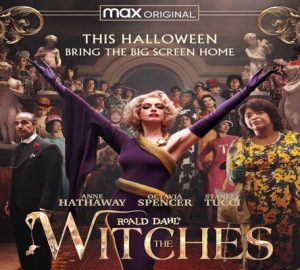The 146-day “strike of lightning”: Writer’s Guild of America vs. Hollywood

Fair pay and better residuals were the goal. Determination was the driving force. The Writer’s Guild of America, better known as the WGA, has recently scored a huge win after weeks of protesting against Hollywood. I can assure you that no corporate executive was spared in the process. From those of us who work in entertainment to those who just consume it, this is a victory for us all. Here’s everything you need to know.
What is a strike?
Aside from knocking all ten pins down in bowling, a strike is when workers refuse to do their job to force their employers to meet certain demands. The longest strike in US history ran for a total of 11 years and started in 1954. Employees at Kohler, a plumbing fixture manufacturer rebelled against the owner for better pay practices and protections for senior workers. Stories like these exemplify the true grit of the working-class citizen. Strikes have been going on since the days of Ancient Egypt and shall continue so long as there is injustice in the workplace.

Who was involved?
The WGA has been around since the 1933. A group of screenwriters were enraged over wage reductions announced by powerful film studios at the time. They banded together along with other unions who were established to protect writers. To date, the WGA has over 10,000 members. In 2023 the WGA gathered to strike against the Alliance of Motion Picture and Television Producers, better known as the AMPTP. The AMPTP is based in LA and was established in 1924. They represent the major film studios and handle big contracts and agreements between themselves and other trade unions.

When was the strike?
This strike lasted from May to September of 2023 for a total of 146 days. Every so often, technology and advancement in distribution present new challenges for industry workers. The issues range from how writers are credited to fixed residual income. Since 1941, the WGA seems to strike every few years in hopes of negotiations and gains for better compensation.
Where did they strike?
The main locations of the strike were in NYC and LA. As we all know, these two cities are the heavyweights in film and television production from the East to West coast. Home to Disney, ABC Studios, Universal and more. It’s pretty obvious why the picket lines were formed here.
But why?
One of the main issues brought about in this strike was the use of AI in TV and film production. Studios are now looking at AI to write scripts. They are also looking into owning the likeness of actors after a one-time performance, and using AI to reuse and syndicate their image across a multitude of media. In a recent episode of “Black Mirror” that features Salma Hayek, the story touches on this issue in depth and the potential hazards that may come along.
In addition to this AI phenomenon, the advent of streaming has initiated a slew of other problems. Writers have received smaller set wages to script write for movies and TV shows, while the big execs rack up millions in streaming afterwards. Job security and larger writing rooms were also at the helm of WGA complaints.
How did it end?
When negotiations finally began, it took a total of five days before a minimal agreement was reached. According to the New York Times, the WGA negotiating committee told union members “…this deal is exceptional – with meaningful gains and protections for writers in every sector of the membership” at the end of the ordeal. The news rang out across social media, rendering joy and praise across the land. As of today, the contract has been reviewed and has been voted for approval. The protest has been suspended and the ban on creative work has been lifted. Many industry professionals are excited to return to work and the normal cycle of production.
Okay, so what now?
While writers have reached a monumental milestone in terms of fair work practices, many other members of entertainment are still fighting for their needs to be met. SAG-AFTRA is the Screen Actor’s Guild merged with the American Federation of Television and Radio Artists. They represent over 200,000 people across the nation and work similarly as the WGA, except for actors and performers. They are currently still striking against Hollywood for a number of issues. They were very vocal in showing their support and solidarity to the WGA. The success of the WGA strike will surely hasten the progress of the SAG-AFTRA strike, but it is not over yet.

Also striking in 2023, came the DGA or Director’s Guild of America. I imagine you can gather what they are and who they represent by now. Earlier this summer, the DGA reached a historic deal with the AMPTP revolving around more pay and residual concerns. Huge increases to pay wages, as well as agreements about workload and A.I. were accepted. 2023 seems to be the year of the strike as people from all entities of the field are banding together to ensure that their livelihoods are protected. If we look at history, we know that this will not be the last set of strikes that Hollywood will encounter. But it is promising to see that true change can come when people draw the line at the amount of abuse they are willing to suffer, on account of their creativity.
Many people have voiced unwarranted and unfavorable opinions about the strike. There is this ongoing notion that anyone that works in Hollywood is filthy rich and shouldn’t ever complain. This has proven to be far from the truth as well-known actors have come forth about living check to check, or getting residual checks in the amount of cents. The affairs extend beyond A-list names. Content creators with humble beginnings on YouTube and other social media platforms have also stepped up to show support and voice frustration. One of my favorite creators, by the name of Chescaleigh, has been at the front of the picket lines since the onset of the strike. As someone who has had an active career in entertainment, she makes excellent use of her platform by continuously highlighting key factors and updates to all of her followers. It is crucial that people online contribute to spreading the message about the dark matters that elites would rather sweep under the rug.
As a fellow creator, I want to extend my gratitude to the WGA, DGA, SAG-AFTRA and any other union put in place to make sure that creatives have sustainable income and fair labor practices. This is not just an issue for Hollywood stars. This strike was for any and everyone that has a favorite TV show, going to see a cool movie this weekend or likes to Netflix and chill every now and then.
While I can agree that we could use a heavy dosage of originality in the TV and film, I could not even imagine a world of AI written scripts. I hope we can now move forward and that the “quality of art” moves to the forefront of the discussion.
























